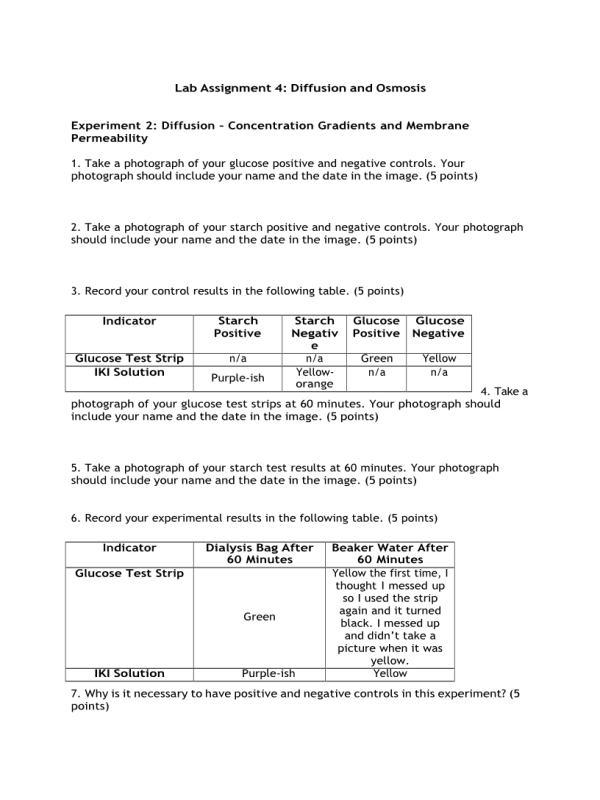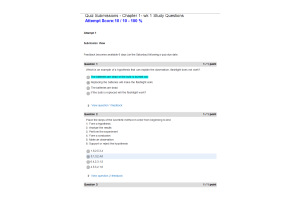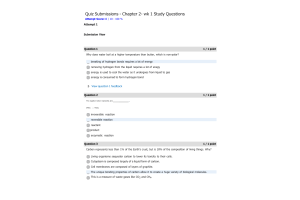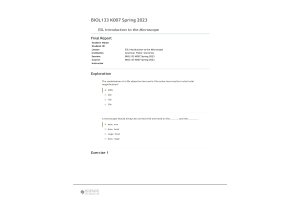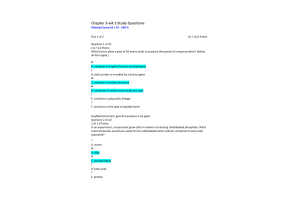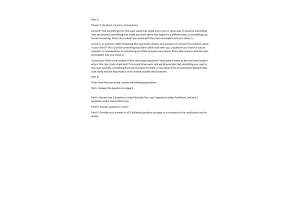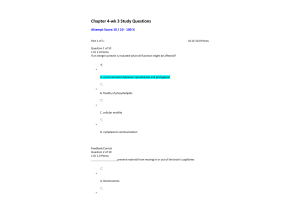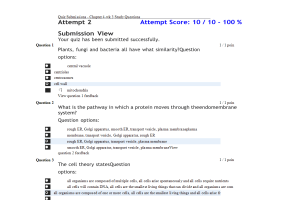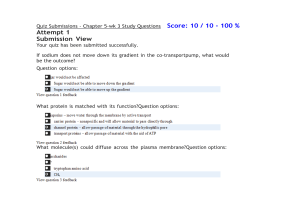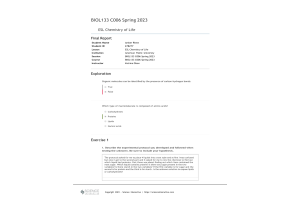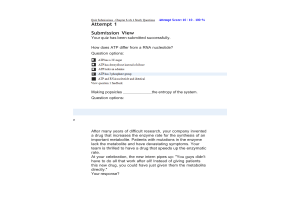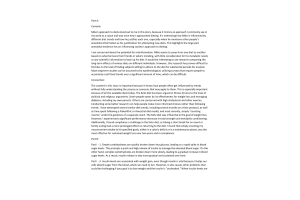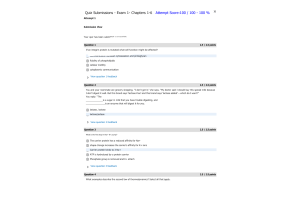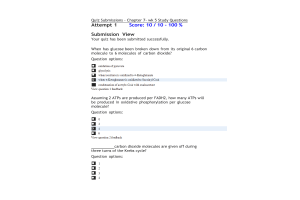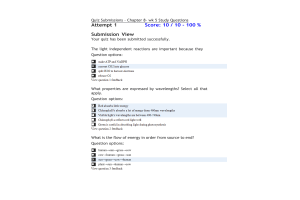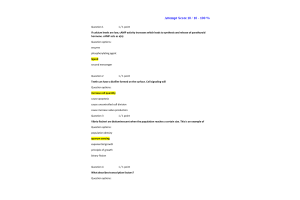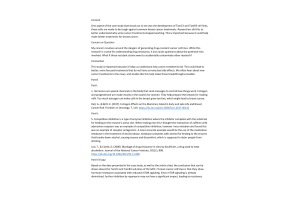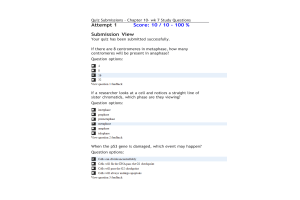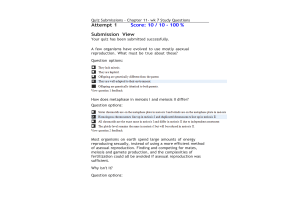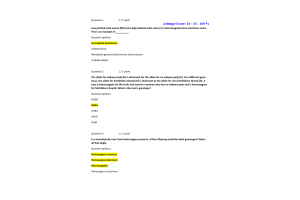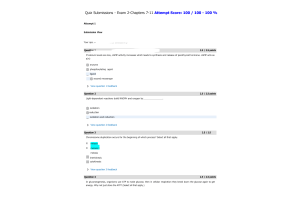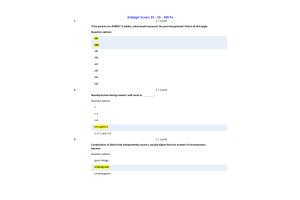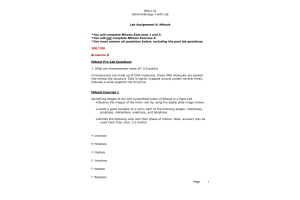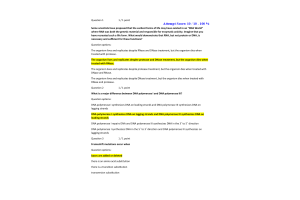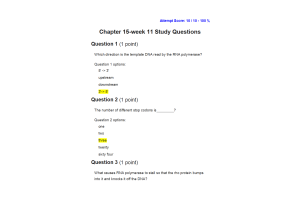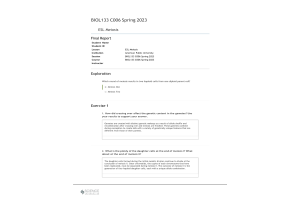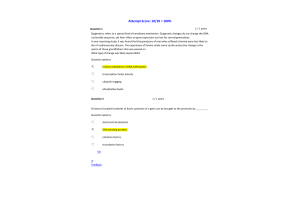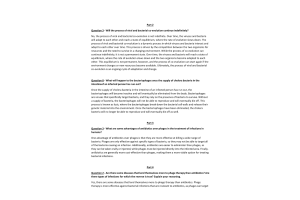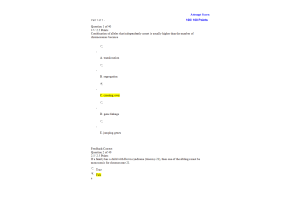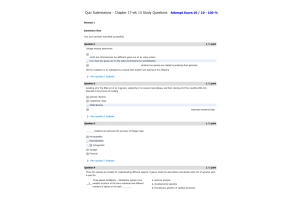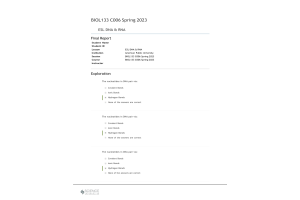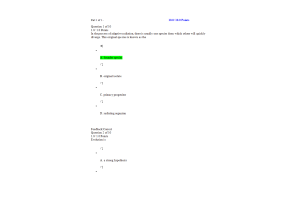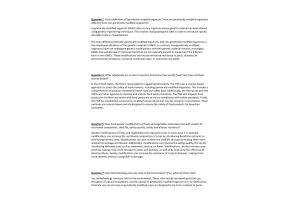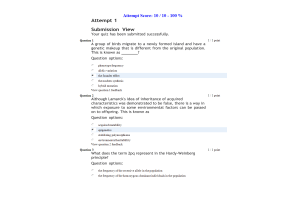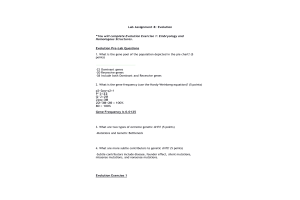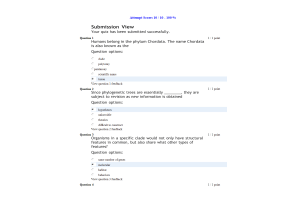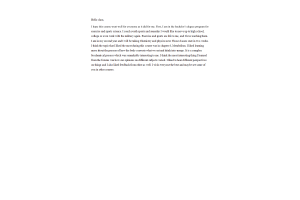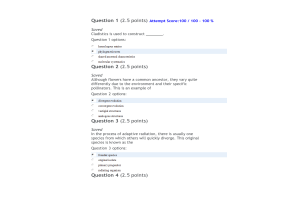BIOL133 Week 5 Lab Assignment 4 - Diffusion and Osmosis
- $20.00
Experiment 2: Diffusion – Concentration Gradients and Membrane Permeability
- Take a photograph of your glucose positive and negative controls. Your
- Take a photograph of your starch positive and negative controls. Your photograph
- Record your control results in the following table. (5 points)
- Take a photograph of your glucose test strips at 60 minutes. Your photograph should include your name and the date in the image. (5 points)
- Take a photograph of your starch test results at 60 minutes. Your photograph should include your name and the date in the image. (5 points)
- Record your experimental results in the following table. (5 points)
- Why is it necessary to have positive and negative controls in this experiment? (5 points)
To have baseline to compare the results to.
- Which substance(s) crossed the dialysis membrane? Support your response with data-based evidence. (5 points)
- Which molecules remained inside of the dialysis bag? (5 points)
- Did all of the molecules diffuse out of the bag into the beaker? Why or why not? (5 points)
Experiment 4: Osmosis – Tonicity and the Plant Cell
- Take a photograph of your experiment at the end of the hour incubation before you empty the test tubes. Your photograph should include your name and the date in the image. (10 points)
- Record your experimental results in the following table. (10 points)
- How did the physical characteristics of the potato vary before and after the experiment? Did it vary by potato type? (10 points)
- Different types of potatoes have varying natural carbohydrate concentrations. Explain how this may influence the water potential of each type of potato. (5 points)
- Did water flow in or out of the potato cells in each of the samples examined? How do you know this? (5 points)
- Would this experiment work with other plant cells? What about with animal cells? Why or why not? (5 points)
- It would work but take longer than potatoes. It would not work for animal cells as they work break apart.
- From what you know of tonicity, are the potato cells in hypertonic, hypotonic or isotonic solutions in the tubes? (5 points)
- Both B samples would be hypertonic since they lost their rigidity and had less water than originally. One sample A would be hypotonic since it absorbed water and caused the sample to swell. The other sample A would be isotonic, soaking did not cause the sample to change
